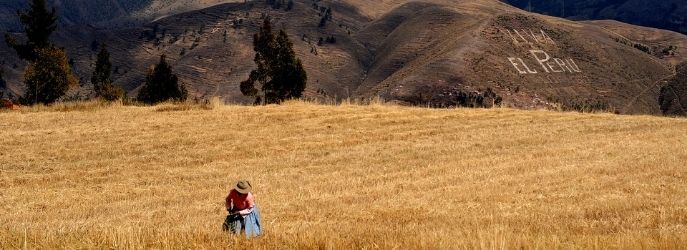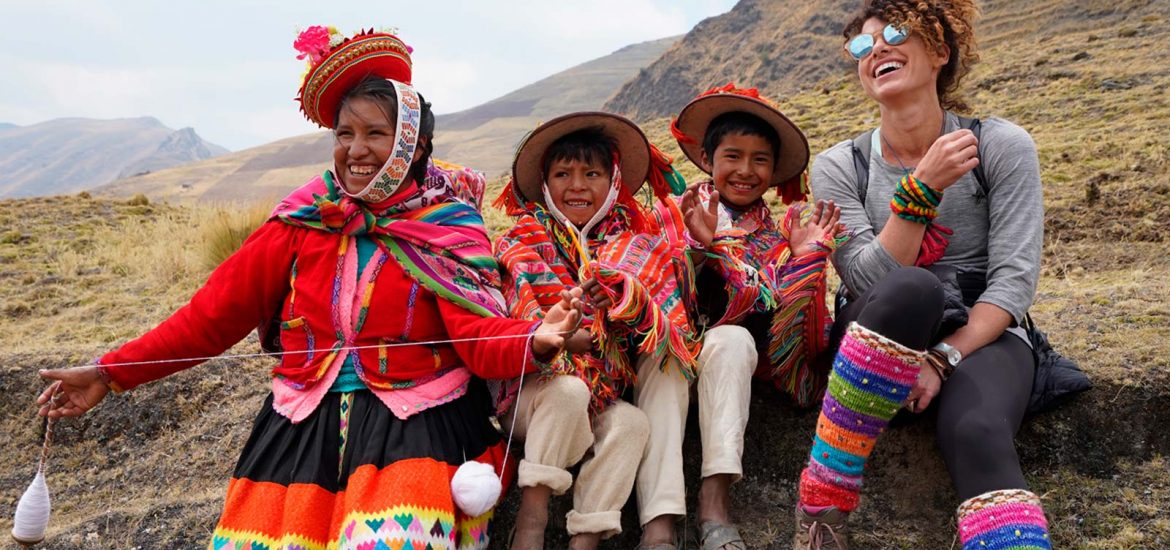If you’re visiting this blog then that means that you’re already planning a trip to this South American gem! There’s so much to know about Peru but first let’s focus on ten things you should know before and during your trip so you can make the most of your experience.
Peru is widely diverse in history, culture and nature, which is why you should plan your trip according to your interests so there’s nothing left behind in your adventure. However, experiencing our country (or any other in general) isn’t just about buying a plane ticket and seeing where the wind takes you.
There are some important details that you need to know before venturing out to our country, and here we’ll tell you all about it along with some recommendations so you can easily optimize your time and itinerary.
1. Check the current entry requirements
As the COVID-19 pandemic struck the entire world, many countries have changed it’s entry requirements in order to keep everyone safe and avoid further infections. For that reason, you should be aware that this documentation may change in a period of 15-30 days.
According to COVID-19 regulations, the Government of Peru requests a negative PCR test to enter the country, and if you’ve completed your vaccine doses then it would be great to show your vaccination certificate upon arrival. However, this doesn’t mean that you won’t have to show your PCR results.
Likewise, you will need to be aware of the regular entry requirements that you will need according to your nationality. To give you a broader understanding of this, here we have listed the current travel documentation asked by the migration office:
- Passport: Concerns to every country that isn’t in the Andean Community. It must have a validity of at least 6 months.
- Tourist Visa: Applies for visitors from Venezuela, Haití, El Salvador, Nicaragua, and Cuba.
- National I.D. Card: Valid for all members within the Andean Community as Colombia, Ecuador, Bolivia, Chile, and Argentina.
Keep in mind that some nationalities will require to show proof of onward travel upon arrival to the Peruvian territory. For more information, please check this blog about the entry requirements for Peru.
If traveling with children, keep in mind that there may be some extra documentation that you’ll need to have with you. Here’s a guide about traveling to Peru with kids so you can know everything about it.
2. Plan your trip according to your interests
Of course, you wouldn’t be traveling blindly without knowing where to go and what to do. But, what we mean with this is that you should know that there are so many attractions to visit in Peru that many of them have been overlooked during the past few years.
Many international travel agencies have exploited the same tourist destinations for years. Making it really hard for people to experience even more than the most-demanded attractions in Peru.
Our country has three regions and each of them comprises a distinctive cultural expression, history and natural wonders. Therefore, if you’re planning a trip to Peru, you should definitely know about the best places to visit even if your adventure only takes you to the Andes.
Here at Viagens Machu Picchu we have prepared the most complete travel guides so you don’t miss anything during your trip. Make sure to check them out while you’re here.
3. Travel off the beaten track

As we mentioned above, there’s much more to know about Peru rather than its most popular attractions. Peru offers countless adventures whether you’re visiting the coast, the mountains or the jungle.
Likewise, there are some unique places hidden in our vast territory and some of them can be as impressive as Machu Picchu. Although some travelers could feel comfortable with visiting these popular destinations, we encourage you to add at least one place that will definitely complement your experience and, without a doubt, be the highlight of your trip.
We want you to explore like an expert and to have a more enriching experience in Peru, where you get to know our culture in depth, take in the everlasting energy of the Andes or even get fully immersed in the lush Amazon basin.
Our local expert team is here to help you with anything you need! We’ll give total flexibility so you can plan your trip the way you dreamed it plus giving you recommendations according to your profile and available time. Contact us and get a tailor-made itinerary now!
4. Use the local currency and don’t be afraid to haggle
The local currency in Peru is called Nuevo Soles and comes in banknotes of 200, 100, 50, 20 and 10; as well as coins with denominations of 5, 2, 1, 0.50, 0.20 and 0.10.
Although many establishments in Peru may accept US Dollars and sometimes Euros, it’s best to pay in Soles since the exchange rates may not be the same everywhere. Likewise, don’t forget to have small bills with you, especially if buying from street vendors or small shops.
It is worth mentioning that you’ll find different price ranges while buying souvenirs or anything in the streets, and to be entirely honest, some people tend to overcharge tourists, even on taxi rides.
If you’re wondering about Peruvian money, we have a special guide so you can know about ATMs, money exchange, counterfeit money and much more. Learn everything about the Peruvian currency here.
5. Learn about the voltage in Peru
Most travelers tend to overlook this matter, but this is very important if you come from a country where the voltage is no more than 110v.
The voltage of Peru is 220 volts at 60 hertz, which is why we recommend you to bring a voltage adapter with you if you really need to bring that 110v device, otherwise, you’ll end up frying it. Some 5-star hotels include a 110v outlet in the bathroom but don’t expect this service from standard accommodation.
On the other hand, the power outlets may be different from the ones in your country. However, you can easily buy an adapter from the airport or any hardware store. Here we have prepared a blog regarding the Plugs and Power Voltage in Peru.
6. Learn some Spanish and Quechua phrases

As you already know Peru’s official language is Spanish, but did you know that about 13 million of the population is represented by Quechua speakers? Well, this language finds its origins in the pre-Columbian era and it was actually imposed by the Inca culture across the entire Tahuantinsuyo empire.
Therefore, this ancient dialect is mostly spoken in the Andean region, especially in small towns and rural areas of the country. However, you’ll surely hear some people speaking Quechua in the city of Cusco and even in Puno, although they mostly speak Aymara there.
For that reason, it is always good to learn a few Quechua phrases to use during your stay, and it would be a lot better if you can use a bit of Spanish as well since not everyone in Peru can speak or understand English. It will surely help you get around and ask for directions!
7. Experience local life at its fullest
There’s nothing more enriching than giving yourself the opportunity to live like a local in the places you visit for at least a day or two. That way you’ll get fully immersed in their cultural expression and learn a bit more about what life is like in the country.
Peru is known for its extensive cultural expression and the best way to learn about it is by taking some experiential tourism excursions in the most remote and beautiful places of the country.
If getting involved with Peruvian daily life is one of your goals during your trip, then you shouldn’t miss the Lake Titicaca Homestay Experience, where you’ll be able to interact and live like a local for a few days in one of the most beautiful islands of the lake.
Likewise, another way to experience tourism is by visiting the local markets, where culture and traditions overflow in each stall. The Andes are the best place to do this and since you are surely visiting Machu Picchu then we highly recommend taking some time to do a walking tour in Cusco to learn how to get around the city.
8. Sample the Peruvian Gastronomy
Peru is famous for its extensive culinary art since it gathers over 2,500 typical dishes with unique preparation techniques and exotic flavours. Actually, the city of Lima is recognized as the Gastronomical Capital of Latin America due to its popular restaurants and gastronomic experience.
We believe that our history can be told through our food since the different cultures that marked our country influenced our culinary art to the point it grew exponentially and continues to do so as even more fusions are created by the most innovative chef in the continent.
Peru is definitely the best destination in South America for those looking to delight their palates. For that reason, you shouldn’t miss the opportunity of trying some of the best restaurants in Lima or anywhere in Peru during your trip.
9. Don’t underestimate altitude sickness

Please take our word for it, altitude sickness is a condition that can affect nearly every traveler in places located over 2,500 meters above sea level. As it can present itself with mild symptoms, it can also be severe to the point it could ruin your itinerary.
We don’t mean to scare you off by pointing this out, but to make you see the reality of traveling to higher altitudes. However, if you follow these recommendations, you might be able to prevent or deal with it:
- Drink enough water! That is the first step to avoid any altitude sickness symptoms.
- Avoid smoking and drinking alcohol.
- If flying to high-altitude places, make sure to take some time to acclimate your body before committing to any physically demanding activity.
- Eat a light but high-calorie diet.
If you’re experiencing any altitude sickness symptoms, make sure to follow these tips:
- Stop and rest wherever you are.
- Don’t go any higher during the next 24 to 48 hours.
- Keep yourself hydrated.
- Do not smoke, drink alcohol or exercise.
- Drink Coca tea, known for helping with acclimation.
It is worth mentioning that altitude sickness is very common in Peru’s highlands. Some medicines help to ease these symptoms such as Diamox and Soroche pills. Please, consult your doctor before taking any of these medications.
10. Make sure to know about the weather in Peru
The climate conditions are quite different in each region, which is why you should have a broader understanding on how the weather will be like in the destinations you’ll visit.
Peru has three natural regions, the coast, the mountains and the jungle, but due to its geographical features, each has a distinctive weather. To put you in context, there are two marked seasons in Peru:
- Dry Season: Takes place between May and October. It’s considered to be the coldest season in the Andes, and chances of rain are nearly nil.
- Rainy Season: It transitions between October and December, but it’s predominant from January and April.
To help you understand these weather conditions, we have come up with a detailed section about when’s a good time to travel to Peru, learn everything about it while you’re here.

The ancient country of the Incas awaits you with open arms! Here we have prepared the best Peru travel packages so you can check out everything you can do in this country on a 5 to even 17-day itinerary. We’d love to be part of your adventure, don’t forget to contact us for more information.

